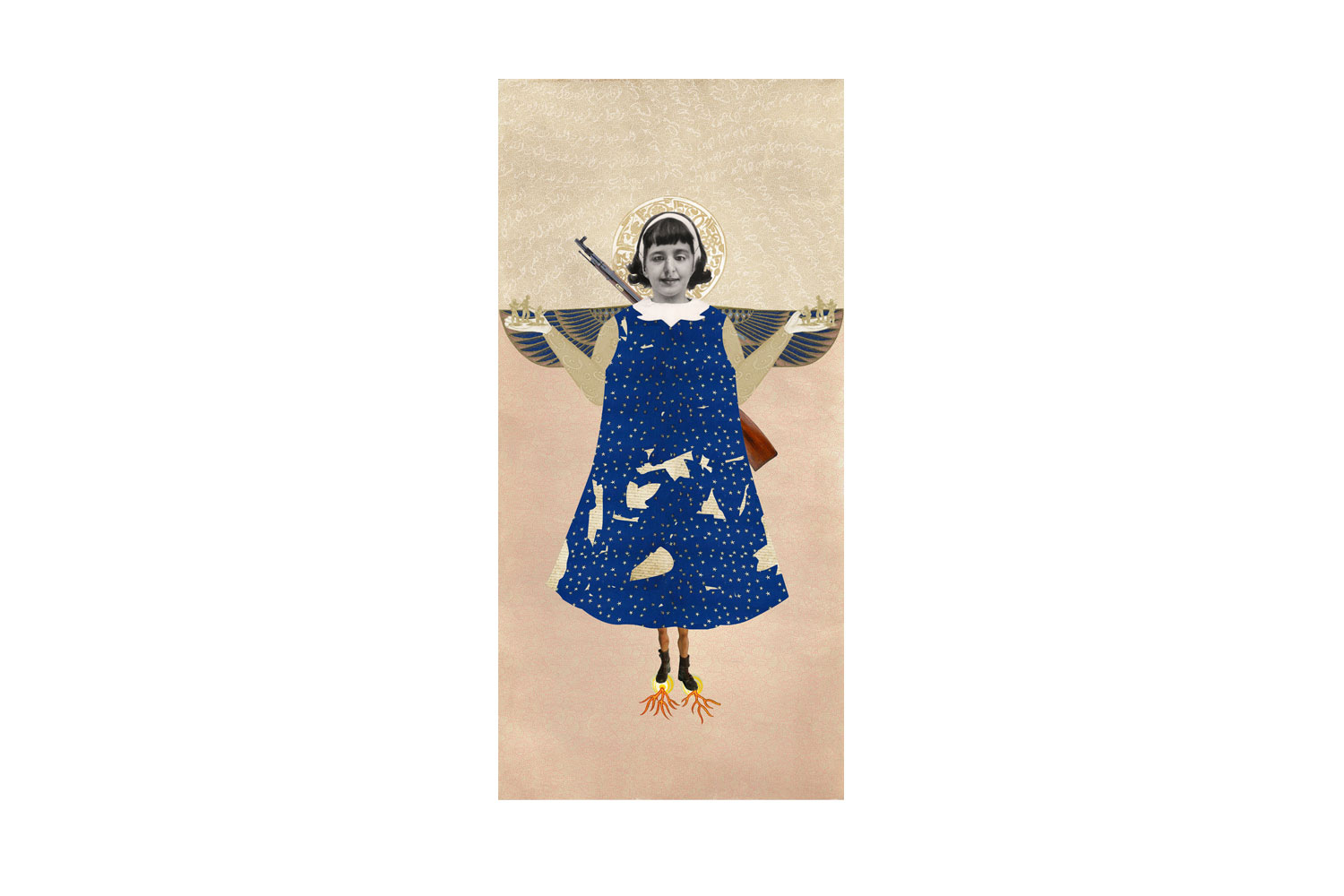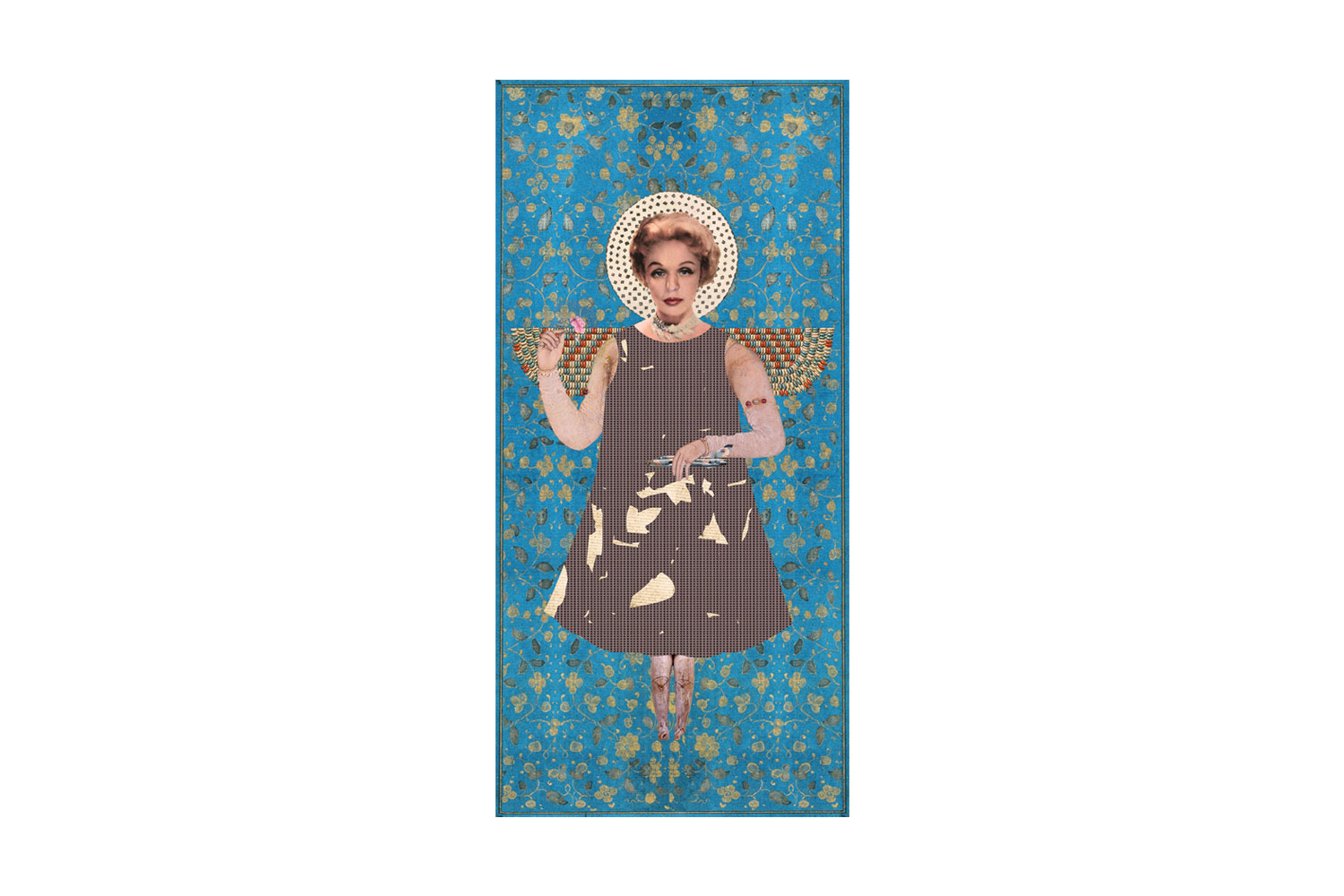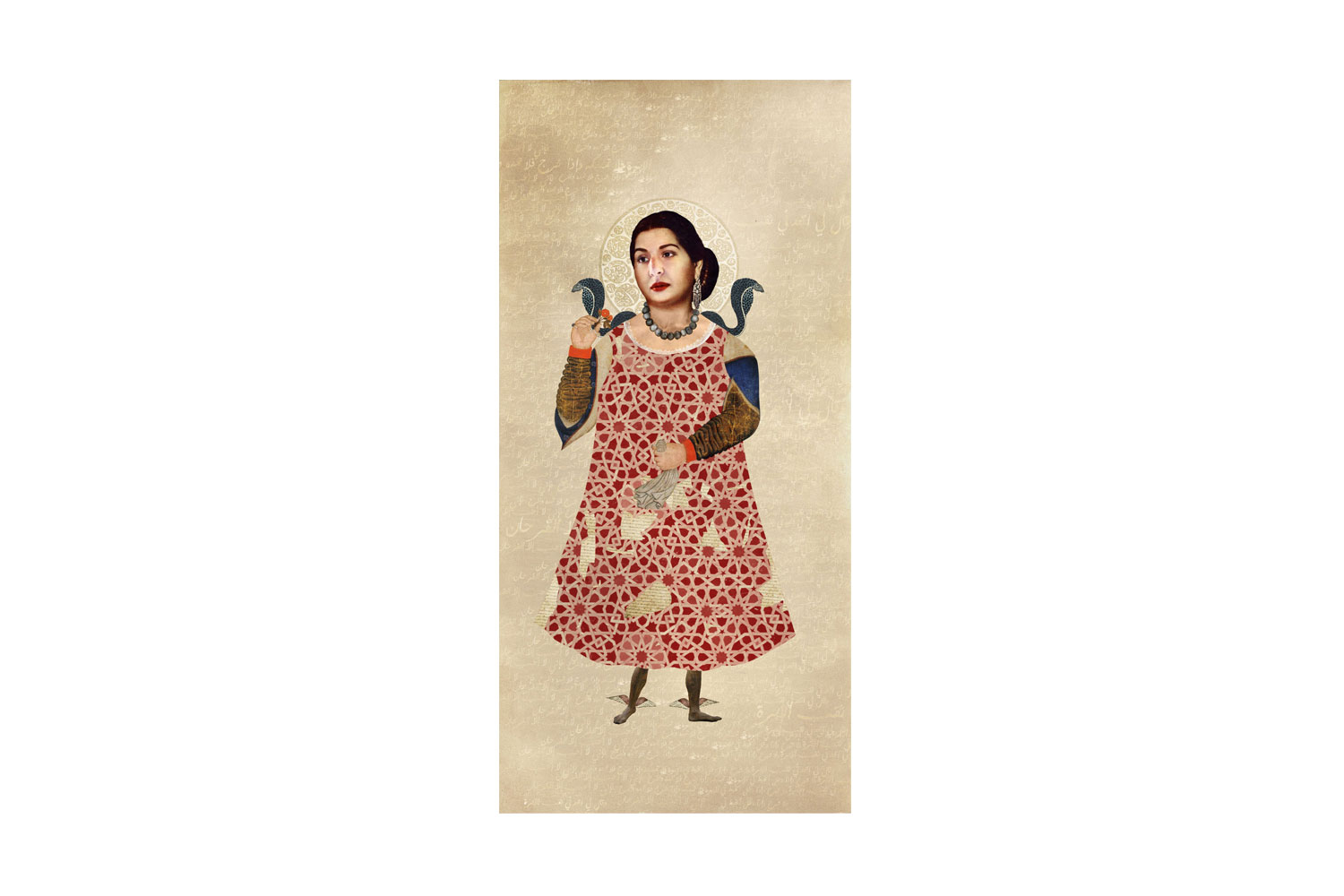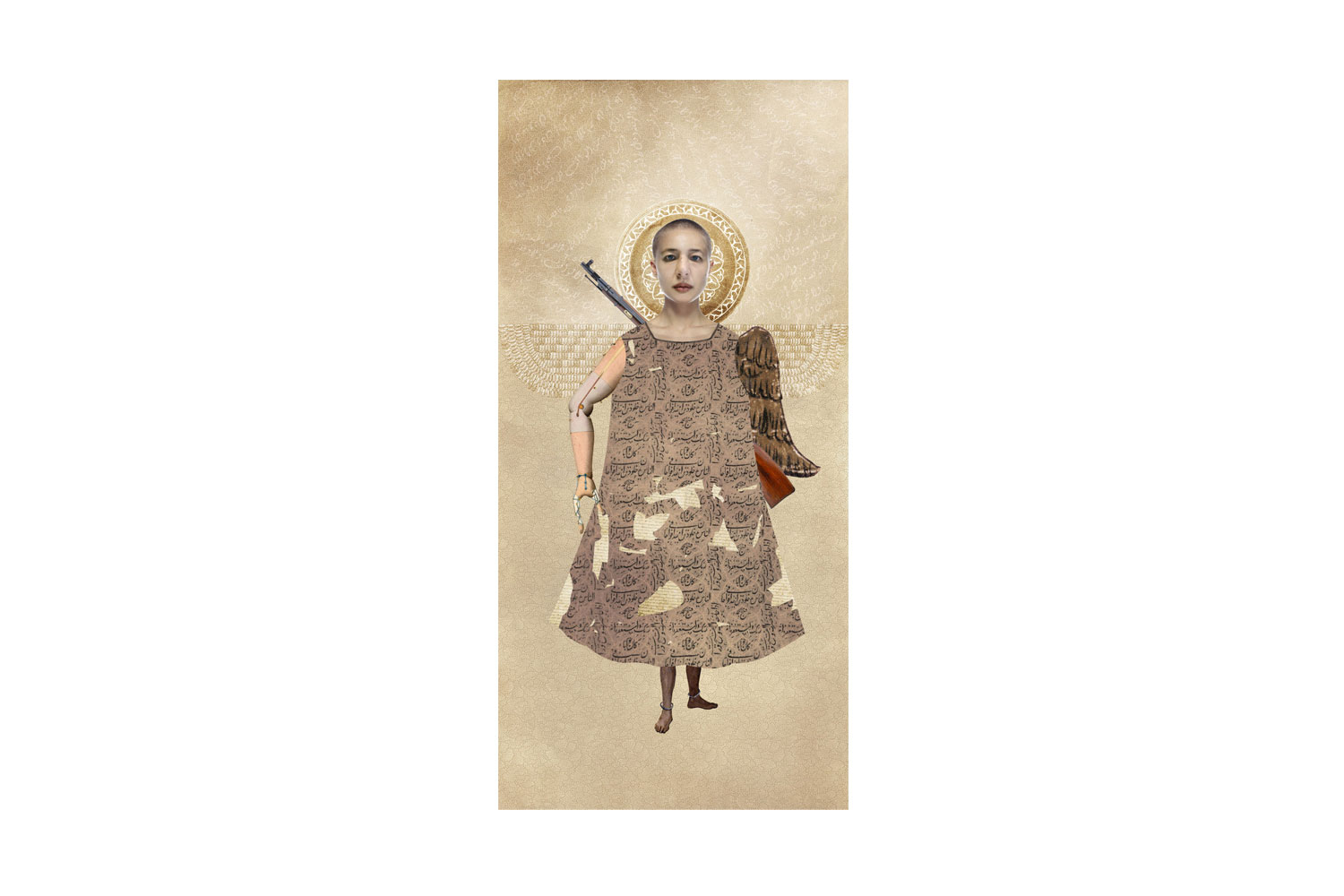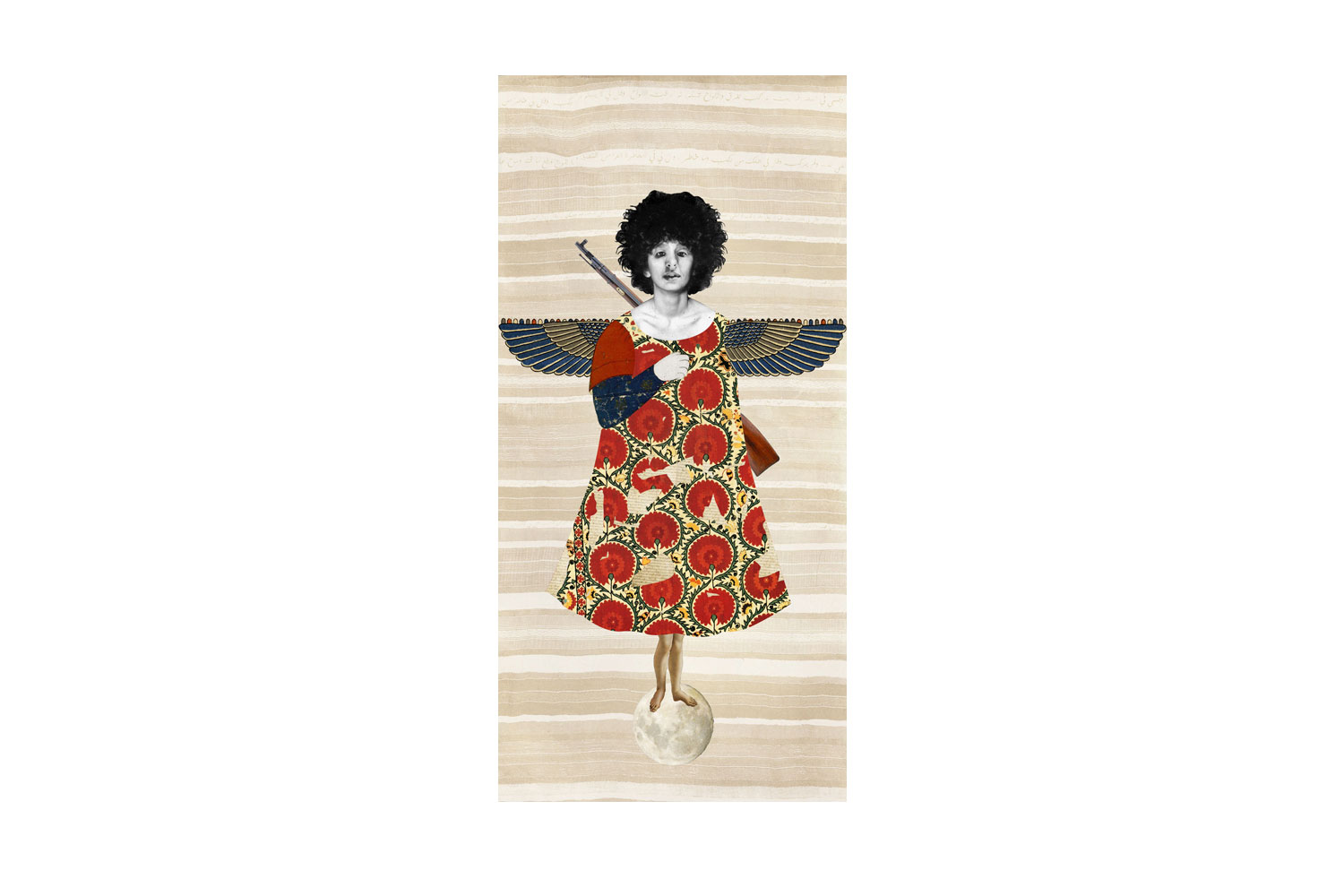Maat
Paper: Hahnemuhle Photorag Bright White 310 grams
"I shall never forget Her who is the giver of happiness; She it is, O Mother, who, in the form of the Moon, Creates the world full of sounds and their meanings, And again, by Her power in the form of the Sun, She it is who maintains the world. And She, again, it is who, in the form of Fire, destroys the whole universe at the end of the ages.” Tantric Hymn
Tantric hymn to the Goddess Shakti. John Woodroffe, aka Arthur Avalon, ed., Hymns to the Goddess, (London: Luzac, 1913), rep. ed. Forgotten Books, 2008, p. 17.
At first sight, Ma’at appears as a series of self-portraits. Every single picture features my face, a parasitical guest that seems to graft itself onto my creations; as though the author were the sole, and central object, of the creative process. The paramount importance of the face in human interactions might easily convince us of such a visual reading, wherein peripheral decorative pieces are attached to a crucial photo-shopped portrait of the self. In fact, it was quite the reverse that took place.
These images are a reaction to my unsettled external environment, a shamanic, transformative ritual to conjure harmony and restore order. My warrior women combine the symbols of male and female power in one. In uniting these opposing energies, Ma’at takes on a transformative quality, asking the universe for healing, and recalibration, through art.
In my journey I have met some twins captured by Diane Arbus, encountered portraits of Frieda Kahlo and Oum Kalthoum, and stumbled upon old prints of Japanese geishas. These pictures spoke to me of posing, and photographing myself, in the very same emotional states that each image carried. They compelled me to embody the slavish strength, the victorious submissiveness, or the perverse innocence that belong to the mosaic of the archetypal Woman. It was as if these images possessed the acting artist, luring me into themselves, urging me to become one with their two-dimensional surface, and blurring the lines between the artist and the art. They demanded to be channeled, required that a living vessel carry their content, this universal yet intimate substance they are made of.
Like so many sirens, they called on me for embodiment in reality and then for translation into another self, fragmented and pictorial, a collage from various subterranean nooks of the collective unconscious meeting, on paper, to produce a totality reaching beyond the sum of its parts. A whole that was imbued with a life of its own, that moved, breathed and behaved as if haphazard fragments of the Woman, hailing from disparate dimensions and times, had finally found each other in an improbable display of harmony and unity. This work comes from something unconscious; it taps into the collective subconscious of humanity, of women. Something whole is created out of all these parts, a lot of parts, subterranean symbols that come together to make a whole. A whole woman perhaps.
These wholes acted like little holes in my unconscious, a porous self letting through partial projections that collide and collude into subliminal magnet, drawing raw, incomprehensible emotions to themselves. I was not photographing myself, as much as I was using my face as a pretext to let through something entirely other and foreign. An external entity that was already a part of me but that I could not express, other than through these pictures, through the incitement to act, to be Other, that they represented. The docility of a female Jesus, gently taken to the cross like a Japanese geisha, or the defiant frailty of a female makeshift goddess, standing grandly over the moon with her Venus legs, still chained to her looks; without a halo, yet having attained something ever more powerful, suspended beneath her feet. The delicate strength of a Portman-like soldier, armed with a rifle— replacing her arm with a long gun— a bionic or perhaps a horrendously maimed hand; the faint suffering of a towering, alchemical Kahlo mixed with the ancient sky of Nut.
Through all of these images, runs the Talasem, the sacred, illegible, hermetic texts, as a reminder that these women only revealed part of their secret to me, that I still fail to fully understand, that it would take me a lifetime to grasp them all, live through all of them, and truly incarnate them all.
It all started with this urge, a primal one, to embody all the women that I admired, despised or desired to become. To become One with the female archetype. Unexpectedly, I had surrounded myself with a family of sorts, with a constellation of characters that were all related to me, that exhibited the ‘air de famille’ characteristic of groups of individuals who come from one single source and yet are all distinctly different. As if I could be more than myself; as if, at the center of unity, there was a mandala instead of a blank page, an explosion of mysteriously patterned little pieces where one had envisioned a single dot.
